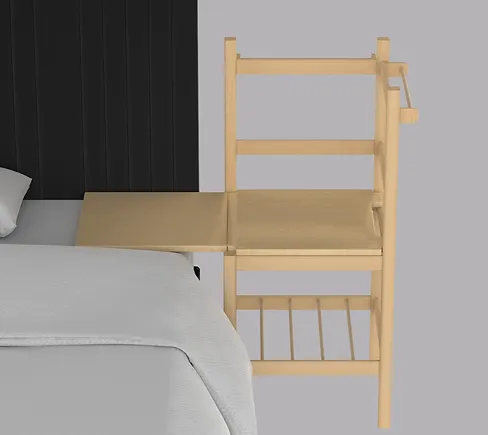Bed mobility aids are essential tools for healthcare professionals to assist patients in moving safely and comfortably in and out of bed. Here are 10 common types used in US hospitals:
1. Transfer Boards:
- Purpose: Used when a patient cannot transfer independently due to limited mobility or strength.
- How it works: A hard, flat surface placed between the bed and a wheelchair or another surface. The patient slides onto the board and then onto the other surface.
2. Transfer Belts:
- Purpose: Provides support and stability to patients who need assistance with transfers.
- How it works: A belt is wrapped around the patient’s waist and secured to the caregiver’s body. It helps prevent falls during transfers.
3. Slide Boards:
- Purpose: Similar to transfer boards, but designed for patients with limited mobility or those who cannot bear weight.
- How it works: A smooth, slippery surface that allows the patient to slide onto or off the bed with minimal effort.
4. Gait Belts:
- Purpose: Used to assist patients with ambulation, providing support and preventing falls.
- How it works: A belt is placed around the patient’s waist and held by the caregiver, allowing for gentle guidance during walking.
5. Mechanical Lifts:
- Purpose: Used for patients who cannot transfer independently due to significant weight or physical limitations.
- How it works: A motorized lift system that raises and lowers the patient, allowing for safe and efficient transfers.
6. Standing Frames:
- Purpose: Assists patients who need help standing up from a seated position.
- How it works: A frame with adjustable height and support straps that helps the patient stand upright.
7. Lateral Transfer Aids:
- Purpose: Used for patients who need to be moved sideways within a bed or from one surface to another.
- How it works: A specialized sheet or device that allows the patient to be moved with minimal effort.
8. Bed Rails:
- Purpose: Provides support and prevents falls from the bed.
- How it works: Rails are attached to the sides of the bed, offering stability for patients who may be at risk of rolling over or falling out.
9. Mattress Pads:
- Purpose: Provides additional support and comfort for patients who may have pressure ulcers or other skin conditions.
- How it works: A specialized mattress pad that helps distribute pressure evenly and reduce the risk of skin breakdown.
10. Ramps:
- Purpose: Provides access to areas that may be difficult for patients with mobility limitations.
- How it works: A sloped surface that allows patients to move from one level to another, such as from a wheelchair to a car.
These are just a few examples of the many bed mobility aids used in US hospitals. The specific tools used will depend on the patient’s individual needs and the healthcare provider’s assessment.
